Concerns Are Raised About the Biblical Absalom’s Tomb in Jerusalem
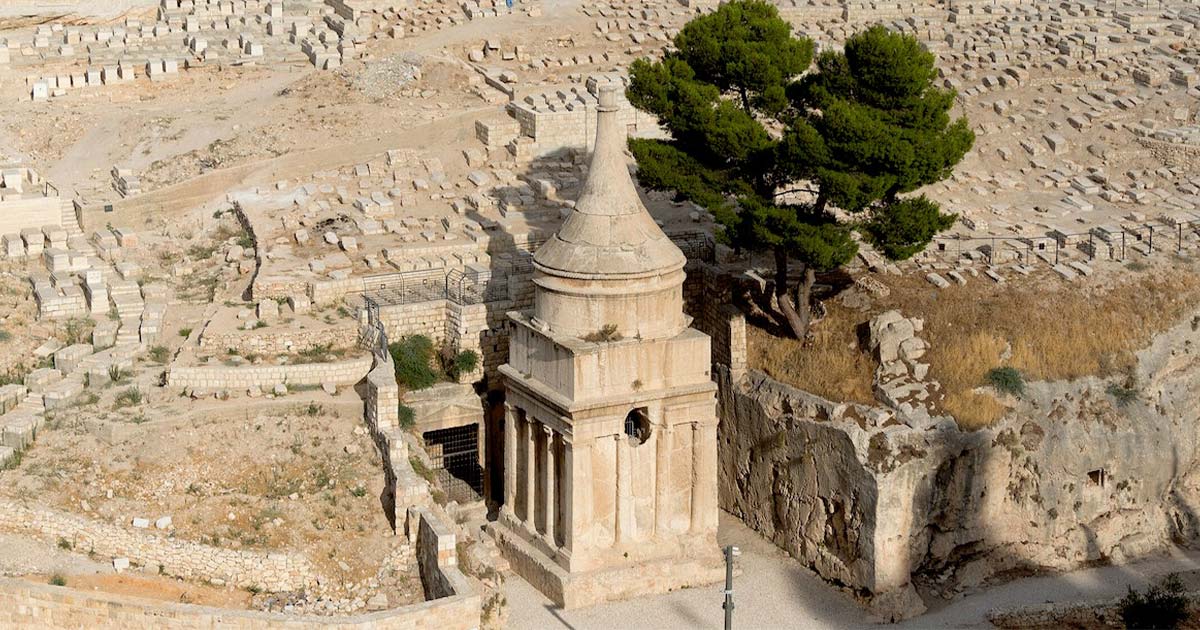
The Tomb of Absalom, also known as the Absalom’s Pillar or Absalom’s Monument, is a remarkable funerary monument located in the Kidron Valley in Jerusalem, Israel. This ancient structure is traditionally associated with Absalom, a biblical figure mentioned in the Old Testament as the third son of King David. The tomb stands as a testament to the rich history and cultural significance of Jerusalem, attracting both scholars and tourists alike. But to whom does it actually belong? Who erected it, and when?
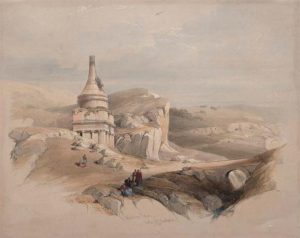
The Tomb of Absalom, or Absalom’s Pillar, by David Roberts in 1839. (Public domain)
The Tomb of Absalom, One of Jerusalem’s Many Monuments
Built during the Second Temple period over two millennia ago, the Tomb of Absalom stands as a testament to ancient history. Built at the base of the Mount of Olives, the site is wrapped in countless legends and imbued with intricate symbolic meanings that continue to captivate curious minds and historians alike.
According to the Bible, Absalom rebelled against his father, King David, who reigned around 1000 BC, and was eventually killed during the Battle of Ephraim Wood. The Book of Samuel describes Absalom’s burial as a pillar he erected for himself in the King’s Valley, which is identified as the Kidron Valley where the tomb is situated. However, modern research reveals that the monument is actually not that old, and was likely built around the 1st century AD.
Tourist Smashes ‘Blasphemous’ Roman Statues Citing Jerusalem Syndrome as Defense
Is This the World’s Most Contested Religious Site? (Video)
So, some traditions suggest that the monument known as the “Tomb of Absalom” is not actually the burial place of Absalom but rather a memorial erected in his honor. The conical shape of the tomb is believed by some to represent a headdress or a crown, symbolizing Absalom’s royal lineage.
The secrets lie in the architectural elements. The tomb contains Ionic columns and Doric friezes, elements from ancient Greece which were introduced to the region only during the Seleucid Empire, many centuries after the death of Absalom. Thus, it has been suggested that it likely belonged to the last Jewish King of Judea, Herod Agrippa, the grandson of Herod the Great.
Ultimately, the exact identity of the person for whom the tomb was built remains a mystery. Several old Byzantine inscriptions variously attribute it to “Zachariah, the martyr, the holy priest, the father of John, or Simeon who was a very just man and a very devoted elder and who was waiting for the consolation of the people.”
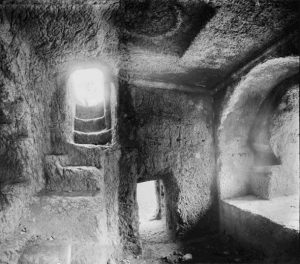
Interior of the Tomb of Absalom. (Public domain)
So-Called “Tomb of Absalom” is a True Relic of Centuries Past
The monument itself is carved from a solid rock and stands approximately 20 meters (65 feet) in height. Its distinctive conical shape is crowned with a pyramidal roof and features a stepped base. The entrance to the so-called “Tomb of Absalom” is a small opening on the south side, leading to a burial chamber carved into the rock. The exterior is adorned with Ionic columns, reflecting classical architectural influences.
The four Ionic columns flanking the entrance give the monument an imposing appearance, and their intricate carvings showcase the skilled craftsmanship of the ancient builders. The overall design is a blend of Hebrew and Hellenistic elements, providing a fascinating glimpse into the cultural synthesis prevalent in the region during that period.
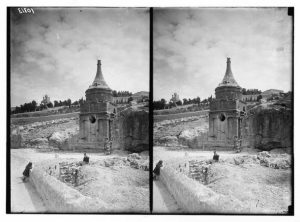
The Tomb of circa 1935. (Public domain)
Folklore and Superstition Surrounding the Tomb of Absalom
Over the centuries, the tomb has become a touchstone for folklore and superstitions. Locals often attribute mystical powers to the site. Meanwhile, visitors sometimes leave notes or prayers in the cracks and crevices of the monument, seeking blessings or divine intervention.
Five Fortified Ancient Cities May Be Part of King David’s Lost Kingdom
One-Kilometer Zip Line Over Historic Old City in Jerusalem Causes Outrage
In the past, mothers would bring their unruly boys to the site, showing them what would become of rebellious sons, again in connection with the story of Absalom. What is more, the local tradition has passersby throwing stones at the tomb, a custom which has been a common practice for many centuries.
Like many ancient structures, the Tomb of Absalom has faced the ravages of time and human activity. Efforts have been made to preserve and protect this historical treasure. Conservation projects aim to stabilize the structure, prevent further erosion and ensure that future generations can continue to marvel at its architectural beauty.
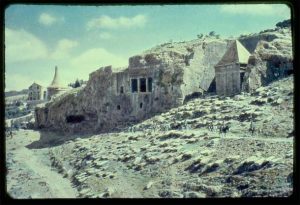
Absalom’s Pillar (or the Tomb of Absalom), the Tombs of St. James and Zachariah in Kedron Valley, Jerusalem. (Public domain)
The Tomb of Absalom Provides Window Into the Past of Jerusalem
The Tomb of Absalom stands as a captivating testament to the intersection of history, archaeology and biblical narrative in the heart of Jerusalem. Its ancient origins, unique architecture and rich symbolism make it a significant archaeological site and a cultural heritage landmark.
As preservation efforts continue, the Tomb of Absalom serves not only as a link to the past but also as a tangible reminder of the enduring legacy of the biblical figures who once walked the storied streets of Jerusalem. The Tomb of Absalom remains a compelling destination for those eager to explore the historical tapestry of the Holy City and reflect on the intricate connections between the ancient world and the present day.